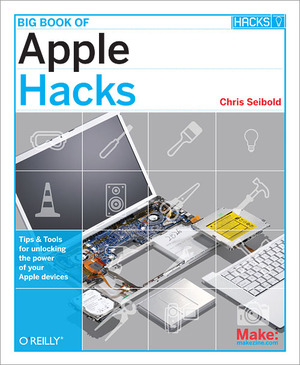
 Time was, Apple products had zero credibility with serious geeks — they were perceived as being purely artists’ tools. And when Photoshop and other professional design programs migrated to Windows, not even that. The brand seemed so doomed that computer executive Michael Dell famously told a Gartner Symposium that he thought the company should be dissolved. Forget some Slashdot Mac vs. PC flamewar, nerds had very real and very sensible reasons for avoiding the platform. Perhaps it originated in the ’80s and ’90s when the Mac OS was closed to tinkering and the hardware was proprietary. PCs had a command line and Macs did not. Furthermore, so many important software development tools simply had no Mac equivalent. Serious programmers stayed away from Macs like they were carriers of some disease.
Time was, Apple products had zero credibility with serious geeks — they were perceived as being purely artists’ tools. And when Photoshop and other professional design programs migrated to Windows, not even that. The brand seemed so doomed that computer executive Michael Dell famously told a Gartner Symposium that he thought the company should be dissolved. Forget some Slashdot Mac vs. PC flamewar, nerds had very real and very sensible reasons for avoiding the platform. Perhaps it originated in the ’80s and ’90s when the Mac OS was closed to tinkering and the hardware was proprietary. PCs had a command line and Macs did not. Furthermore, so many important software development tools simply had no Mac equivalent. Serious programmers stayed away from Macs like they were carriers of some disease.
However, with the advent of Mac OS X, all that changed, and a few years later, Apple products are highly regarded in the geek community. And in that group of people, there is no greater respect accorded to a product than wanting to hack the hell out of it. That’s where Big Book of Apple Hacks comes into play.
They’re not kidding about the “big” — the book weighs in at over 600 pages and describes 131 separate hacks. It covers every current project that Apple offers, from OS X to iPods, iTunes, and iPhones, as well as less ubiquitous products like the Apple TV. There are also sidebar minihacks and tips supplementing the main articles.
From a GeekDad perspective, this resource has a lot to offer both parent and child. Think of it, how many kids out there pack a mobile phone and MP3 player? Throw in a kazillion laptops and that’s a lot of potential hacking. With more and more kids having expensive hardware at home, it’s important for them to understand the potential and risks of tinkering. The good news is that Apple Hacks has tons of kid-friendly hacks: Learning how to swap in a larger hard drive (Hack 110) or create your own screensaver (Hack 42) is something many kids would like to do. My 12-year-old is running Tiger on an older iBook. Would Hack 17: Kill Dashboard be helpful to speed up her machine? All it takes is a couple lines typed into the terminal — anyone can do it.
Here are my favorite chapters:
Chapter 1: Before You Hack
A must read, simply because it educates you on the consequences of your tinkering. For most of us, popping open a product’s case is a great way to make it never work again. Hack 02: Create an Emergency Bootable Flash Drive is a necessity before you tinker, as is backing up your data.
Chapter 4: Command Line Fun
While OS X is great, it overlays a much older and extremely stable operating system, Unix. Apple left a lot of stuff off of OS X menus because non-power users don’t need them. Things like daemons and shell scripts.
But even if you don’t need any of this additional capability, simply learning about the mysterious of Unix is a great educational experience.
Chapter 12: Hack the iPhone
Easily the most hackable mobile ever, the iPhone is screaming to be tinkered with. First, you have to jailbreak the phone — however, you have to do it smart, because if you mess it up, your phone will become a metal and glass brick. Not surprisingly, the bulk of the chapter describes the jailbreak process, going over each firmware version and the steps needed to break it.
Chapter 15: Hack Some Hardware
Possibly the most intriguing chapter, this is the fun stuff that may be more fanciful than most people want, like home automation and putting a Mac Mini in your car.
Apple Hacks demonstrates the weakness of competing books. A lot of them insult the reader — some even in the title — by suggesting that they’re well, dummies. Others present a very narrow breadth in headache-inducing detail that only someone who is already an expert would appreciate. Apple Hacks covers all the bases, with fun hacks for each product, giving non-technical types or casual tinkerers plenty to work on. The price is also reasonable. Seems like most tech books run forty or fifty bucks — Apple Hacks is a mere $23 on Amazon.


